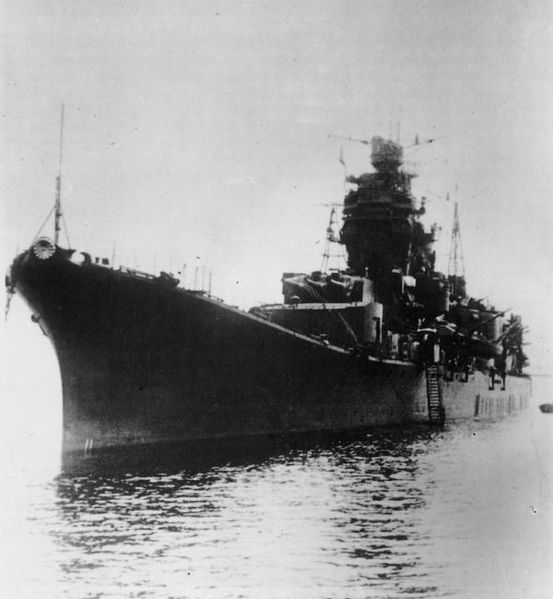
The next trial was with twin 7.9" which also proved a problem. Not with the twin turret but the 7.9" weapon. At one stage the four ships had all been completed with different classes of armament from the 7.9" to the 6.1".

IJN Furutaka (CL-CA-1926+)
First cruisers designed after WW1 under the new Washington treaty conditions. The main armament was improved from the 5.5" of the Sendais' to the new 7.9" weapon, which turned out to be a disappointment in service. Also all that could be managed for the original layout was six single guns. An unwieldly and awkward armament for servicing the guns with shells. So why were the Japanese always willing to keep with single and twin 7.9" and 8" turrets while the rest of the world went to triples? The only thought I could come up with was that the hulls of the cruisers could be kept finer with better length to breadth ratios. The twins did not need as much breadth of hull as the triple. Easier to make the hulls go faster.

The next trial was with twin 7.9" which also proved a problem. Not with the twin
turret but the 7.9" weapon. At one stage the four ships had all been completed
with different classes of armament from the 7.9" to the 6.1".

The ships served for ten years in their original configurations but the ships
were always due to be rebuilt. Thought was given to keeping with the larger 8"
gun in 3 twin turrets but the number of guns worked against this. These were to
be modern cruisers and the enemies they would fight in the same category would
outgun them. Then the new 6.1" guns manufactured for the Mogami and Yamato class
were eminently suitable for these ships. The guns fired almost as far as the 8",
but they did fire faster. The secondary armament also went through various
changes till it ended with four twin 5" mountings from the original 4 single
4.7". The best of the armament fitting was the two quadruple sets of 24" Long
Lance torpedoes mounted on each beam. As with most Japanese cruisers of the time
the four ships were fitted with aircraft handling facilities for up to 3
aircraft.
One problem all Japanese cruisers (and destroyers) had was: stability. All were
overweight for the hull ratios. Most required remedial action for this in some
form or another. Mostly by the fitting of bulges. Which of course slowed the
ships down several knots and defeated the object of the very fine hulls.
Japanese designers had a lot to learn. They designed very good looking and well
armed ships but ton for ton they were not as good as their competitors.
(My job, should I choose to accept it, is to improve the Japanese ships to a
point where every class does not require immediate remedial action to stop them
joining the submersible fleet.)
| Displacement | 8,500 tons std, 10,550 tons full load |
| Length | 581 ft |
| Breadth | 62 ft |
| Draught | 19 ft |
| Machinery | 4 shaft Steam turbines, 110,000shp |
| Speed | 33 knots |
| Range | 6,500 miles at 18 knots |
| Armour | 3" side, 2" deck, 2" turrets. |
| Armament | 9 x 6.1" (3x3) 8 x 5" (4x2) 33 x 25mm (9x3 6x1) |
| Aircraft | 3 |
| Torpedoes | 8 x 24" (2x4) |
| Complement | 640 |
| Notes | IJN Furutaka (1922-1926) IJN Kako (1922-1926) IJN Aoba (1924-1927) IJN Kinugasa (1924-1927) |
